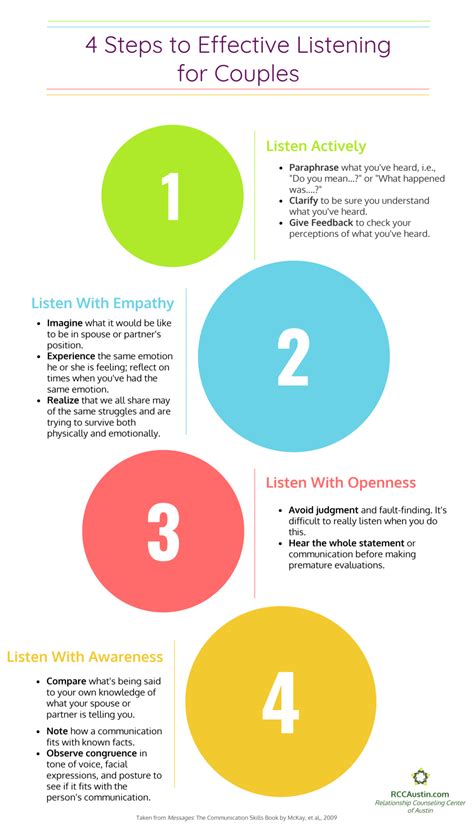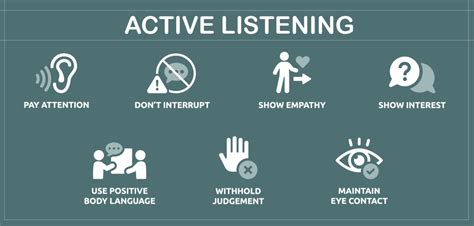In any meaningful relationship, communication is the bedrock upon which trust, understanding, and intimacy are built. However, communication isn’t just about talking; it’s profoundly about listening—truly listening—to your partner’s feelings. Active listening goes beyond merely hearing words; it involves fully concentrating on what is being said, both verbally and non-verbally, to fully understand their perspective and emotional state. When done effectively, it can transform conflicts into opportunities for growth and deepen your bond immeasurably.
Why Active Listening Matters So Much
Often, we listen with the intent to reply, to defend, or to offer a solution, rather than with the pure intent to understand. This common habit can lead to misunderstandings, unresolved issues, and feelings of invalidation in a relationship. Actively listening to your partner’s feelings shows respect, care, and a genuine desire to connect with them on a deeper emotional level. It creates a safe space where they feel heard, seen, and valued, which is essential for emotional well-being and a thriving partnership.

1. Prepare Your Mind and Environment
Choose the Right Time and Place
Timing is everything. Don’t try to have a deep conversation when one of you is rushed, stressed, or distracted. Find a quiet, private space where you can both relax and focus. This might be at home after dinner, during a walk, or at a designated time you both agree upon.
Eliminate Distractions
Put away phones, turn off the TV, and minimize anything else that might pull your attention away. Make eye contact and orient your body towards your partner. Your physical presence should signal that they have your full, undivided attention.
2. Engage with Empathy and Openness
Listen to Understand, Not to Respond
This is perhaps the most critical shift. Your goal is not to formulate your rebuttal or solution while they are speaking. Instead, focus entirely on what they are saying, how they are saying it, and the emotions underlying their words. Try to step into their shoes and see the situation from their perspective.
Observe Non-Verbal Cues
A significant part of communication is non-verbal. Pay attention to your partner’s body language, facial expressions, tone of voice, and gestures. These cues can often convey more about their feelings than their words alone. A sigh, a tense posture, or a lowered gaze can speak volumes.

3. Reflect and Clarify What You’ve Heard
Paraphrase and Summarize
Once your partner has finished speaking, or paused, gently paraphrase what you’ve heard in your own words. For example: “So, if I understand correctly, you’re feeling frustrated because you believe I’m not pulling my weight with household chores, and that makes you feel unsupported?” This not only confirms your understanding but also gives your partner a chance to correct any misconceptions.
Ask Open-Ended Questions
Instead of “Are you angry?”, try “Could you tell me more about why that makes you angry?” or “What emotions are coming up for you right now?” Open-ended questions encourage deeper elaboration and prevent simple ‘yes’ or ‘no’ answers, inviting them to share more of their inner experience.

4. Validate Feelings and Offer Support
Acknowledge and Validate Emotions
Your partner isn’t asking you to agree with their perspective necessarily, but to acknowledge and validate their feelings. Statements like, “I can see why you would feel frustrated in that situation,” or “It makes sense that you’re feeling sad about this,” are incredibly powerful. Validation doesn’t mean you agree with the ‘facts’ of the situation, but that you recognize their emotional experience as real and legitimate for them.
Resist the Urge to Fix or Advise (Unless Asked)
It’s natural to want to solve your partner’s problems, especially when you care about them. However, sometimes they just need to vent and feel understood. Ask, “Are you looking for me to just listen, or would you like my advice/help with this?” This simple question respects their autonomy and ensures you’re providing the support they actually need.

5. Manage Your Own Reactions
It’s important to regulate your own emotions during these conversations. If you find yourself getting defensive or upset, take a brief moment to breathe and recenter. Remind yourself that you are creating a safe space for your partner. If the conversation becomes too heated, it’s okay to suggest taking a break and revisiting it when both of you are calmer, ensuring you commit to a specific time to resume.

Conclusion: The Ongoing Practice of Connection
Active listening is not a one-time technique but an ongoing practice that requires patience, empathy, and consistent effort. It’s a skill that improves with practice, strengthening the foundation of your relationship one heartfelt conversation at a time. By truly hearing and understanding your partner’s feelings, you not only resolve conflicts more effectively but also build a deeper, more resilient, and more loving connection that can withstand the tests of time.




